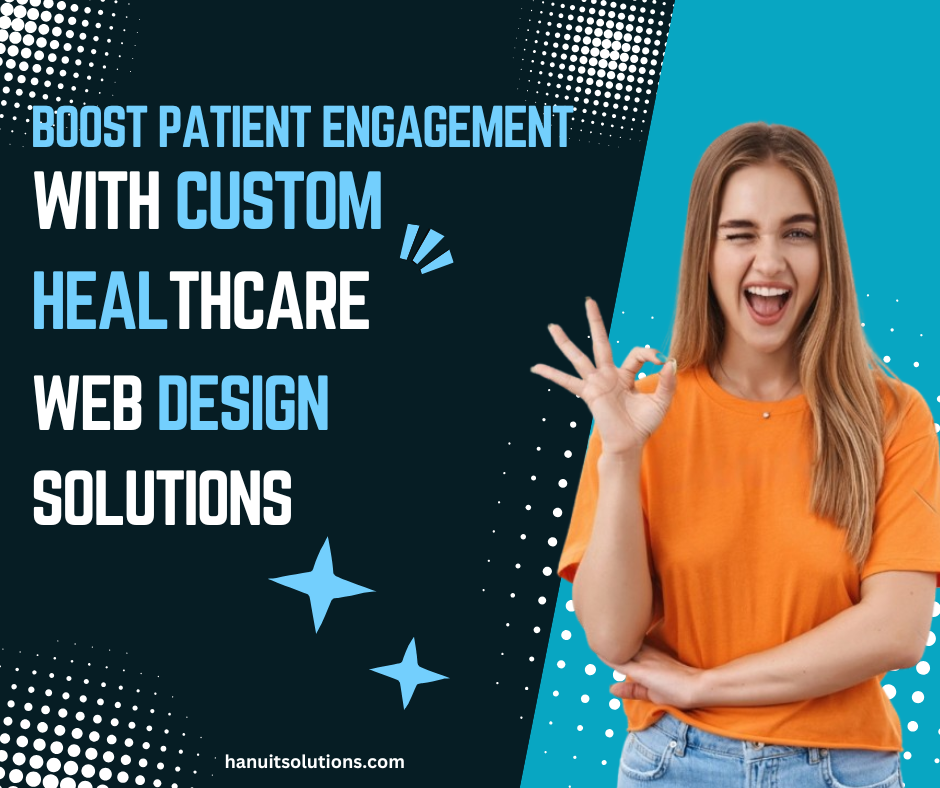Boost Patient Engagement with Custom Healthcare Web Design Solutions
In today’s digital-first world, healthcare providers increasingly turn to online platforms to improve patient engagement. The way patients interact with healthcare services has evolved dramatically. They now expect user-friendly websites that quickly access essential information and services. Custom healthcare web design solutions are at the forefront of this transformation, enabling providers to connect with patients more effectively while enhancing their overall experience.
The Importance of Patient Engagement
Patient engagement is no longer just a buzzword; it’s a critical component of successful healthcare delivery. Engaged patients are more likely to follow treatment plans, schedule regular checkups, and take proactive steps in managing their health. For providers, this translates into better health outcomes and increased patient satisfaction.
A well-designed healthcare website acts as a bridge between providers and patients. It is a central hub for communication, education, and service delivery. Custom healthcare web design solutions allow providers to tailor their online presence to meet the unique needs of their patient population.
Why Customization Matters in Healthcare Web Design
Not all healthcare practices are the same, and neither are their patients. A generic website may fail to address specific patient needs or align with a provider’s brand identity. Custom healthcare web design solutions offer the flexibility to:
- Personalize User Experiences: Tailor content and navigation to different patient demographics, such as seniors, children, or individuals with chronic conditions.
- Enhance Accessibility: Ensure compliance with ADA (Americans with Disabilities Act) guidelines to make the website accessible to all patients, including those with disabilities.
- Optimize Functionalities: Include features like appointment booking, telehealth services, and patient portals that streamline healthcare interactions.
- Align with Branding: Reflect the provider’s values, mission, and professionalism through a cohesive design.
Key Features of Effective Healthcare Web Design
Custom healthcare web design solutions incorporate a variety of features to boost patient engagement. Here are some essential elements:
- Responsive Design: With the majority of users accessing websites on mobile devices, a responsive design ensures seamless functionality across all screen sizes.
- Easy Navigation: A clean and intuitive layout helps patients find information quickly, such as contact details, office hours, or health resources.
- Secure Patient Portals: Offer a secure platform for patients to view test results, communicate with healthcare providers, and manage appointments.
- Integrated Telehealth Services: Telehealth is no longer optional. Integrating virtual consultation features enables patients to access care from the comfort of their homes.
- Educational Content: Providing blogs, videos, and downloadable resources educates patients about various health conditions, treatments, and preventive care.
- Search Engine Optimization (SEO): An optimized website increases visibility, making it easier for potential patients to find your services online.
- Online Scheduling Tools: Simplify appointment bookings with user-friendly scheduling features, reducing administrative burden.
How Custom Web Design Improves Patient Engagement
1. Building Trust Through Professionalism
A custom-designed website creates a professional image, instilling confidence in your services. Patients are more likely to trust a provider whose website reflects attention to detail and quality.
2. Improving Accessibility
Accessibility features, such as screen reader compatibility and text resizing options, ensure that all patients, including those with disabilities, can interact with your website.
3. Encouraging Active Participation
Interactive tools like health trackers, symptom checkers, and personalized health recommendations motivate patients to take an active role in managing their health.
4. Enhancing Communication
Secure messaging systems and FAQ sections reduce the communication gap, making it easier for patients to get their questions answered promptly.
5. Streamlining Administrative Processes
Online forms, bill payments, and prescription refills simplify administrative tasks, freeing up time for both patients and staff.
Also read: Squarespace vs WordPress: Pricing Compared in [2025]
Case Studies: Success Stories with Custom Web Design
Example 1: A Pediatric Clinic
A pediatric clinic implemented a custom web design that included bright, child-friendly visuals and easy navigation for parents. Features like online immunization schedules and developmental milestone trackers significantly improved parental engagement and clinic visits.
Example 2: A Rural Healthcare Center
A rural healthcare provider used a custom website to introduce telehealth services, allowing patients in remote areas to consult specialists. The website also included local health resource guides, improving community health literacy.
Choosing the Right Web Design Partner
Selecting a professional web design agency specializing in healthcare is crucial for achieving your goals. Look for a partner with:
- Healthcare Expertise: Experience in designing websites for healthcare providers.
- Compliance Knowledge: Familiarity with HIPAA, ADA, and other regulatory requirements.
- Proven Portfolio: A track record of successful healthcare web design projects.
- Ongoing Support: Post-launch maintenance and updates to keep your website functional and secure.
Measuring the Impact of Your Website
Once your custom healthcare website is live, it’s essential to track its performance. Key metrics include:
- Patient Engagement Rates: Monitor the frequency of logins, appointment bookings, and portal usage.
- Bounce Rates: A lower bounce rate indicates that visitors find your content relevant.
- Patient Feedback: Regularly solicit and analyze patient feedback to identify areas for improvement.
- SEO Performance: Measure traffic growth from organic searches.
FAQs: Custom Healthcare Web Design Solutions
What are custom healthcare web design solutions?
These are tailored web design services specifically created to meet the unique needs of healthcare providers and their patients. They include features like secure portals, telehealth integration, and personalized content.
Why is custom web design important for healthcare providers?
Custom design ensures that the website aligns with the provider’s branding, enhances accessibility, and incorporates functionalities that improve patient engagement.
How can a custom website improve patient engagement?
By offering user-friendly features such as online scheduling, secure messaging, and educational content, a custom website makes it easier for patients to interact with their healthcare provider.
Is a custom healthcare website compliant with regulations like HIPAA?
Yes, when designed by experienced professionals, custom healthcare websites adhere to HIPAA and other regulatory standards, ensuring data security and privacy.
How long does it take to develop a custom healthcare website?
The timeline varies depending on the complexity of the project but typically ranges from 8 to 16 weeks.
What’s the cost of a custom healthcare website?
Costs vary based on features, design complexity, and provider needs. It’s best to get a quote from a web design agency.
Conclusion
Custom healthcare web design solutions are a game-changer in improving patient engagement. By creating a tailored online experience, providers can enhance accessibility, streamline services, and foster stronger patient relationships. Investing in a professional, custom-designed website is no longer optional but a necessity for staying competitive in the evolving healthcare landscape.








